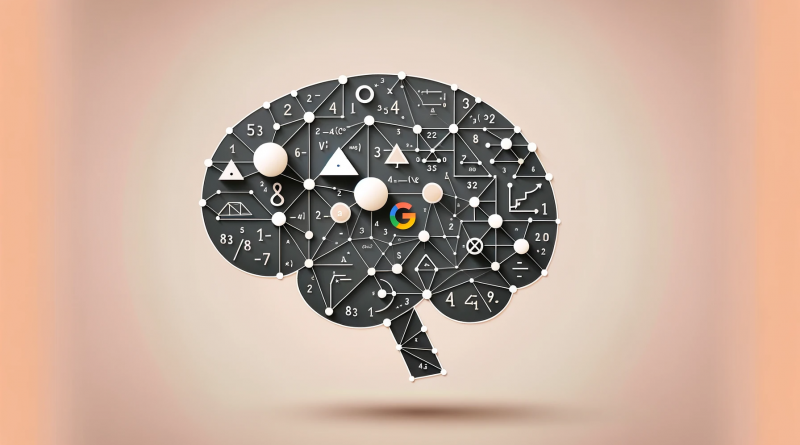Google DeepMind’s AI excels in geometry problems akin to a Math Olympiad level.
In an unprecedented advancement in artificial intelligence, Google DeepMind, a frontrunner in AI research, has developed a new AI system with remarkable capabilities in solving intricate geometry problems. This system, named AlphaGeometry, showcases proficiency akin to a human gold medalist at the International Mathematical Olympiad (IMO), an esteemed contest for high-school students globally recognized for its difficulty.
AlphaGeometry is unique in its operational methodology, combining two distinct approaches for problem-solving. Firstly, it employs a neural language model that generates ideas based on intuition. This model, a technological cousin to the engines driving Google’s search and natural language comprehension capabilities, excels in conceptualizing solutions. Secondly, a symbolic deduction engine, influenced by the pioneering work of Chinese mathematician Wen-Tsün Wu in 1978, complements the language model. This engine employs formal logic and established rules to validate the solutions proposed by the language model.
The system’s efficacy was rigorously tested with 30 complex geometry problems sourced from past IMO competitions, known for challenging even the most expert mathematicians. Impressively, AlphaGeometry solved 25 of these problems within the standard time limit of 4.5 hours, a feat paralleling the average score of human gold medalists. This performance vastly outstrips the prior best system, which was grounded in Wu’s method and could only solve 10 problems.
Published in the prestigious journal Nature, these results signify a monumental step in AI’s ability to engage in logical reasoning and contribute novel mathematical insights. This achievement is particularly noteworthy given the inherent challenges posed by mathematics, and geometry in particular, to AI systems. The field of mathematics demands a combination of creative and stringent analytical skills. Unlike text-based AI models, which benefit from training on extensive web-based datasets, mathematics requires a more symbolic and specialized approach. Furthermore, mathematical problem-solving necessitates a level of logical reasoning that has traditionally been a hurdle for AI models.
To address these challenges, the team behind AlphaGeometry devised an innovative neuro-symbolic approach, effectively harnessing the strengths of both neural networks and symbolic systems. Neural networks, adept at pattern recognition and prediction, are complemented by symbolic systems grounded in formal logic and stringent rules. This combination enables the correction and justification of the neural network’s conclusions.
The approach adopted by the researchers mirrors the concept of “thinking, fast and slow”, as popularized by Nobel laureate Daniel Kahneman. In this framework, one system rapidly generates intuitive ideas, while the other engages in more deliberate and rational decision-making. Together, these systems synergize to tackle complex mathematical problems.
Beyond solving given problems, AlphaGeometry has demonstrated the ability to generalize to new problems and unearth theorems not explicitly stated in the problem statement. For instance, it successfully proved a theorem about the angle bisector of a triangle, which was neither a premise nor a specified objective in the problem.
The team has made AlphaGeometry open source, aiming to spur further research and applications in mathematics, science, and AI. They acknowledge the limitations of their current work, including the need for more comprehensible human-readable proofs, the scalability to more intricate problems, and the ethical implications of AI in mathematics.
While currently focused on geometry proofs, the researchers believe that their synthetic data methodology could extend AI reasoning into other mathematical and scientific domains where human-generated data is scarce. This could lead to AI-driven automation in the discovery and verification of new knowledge, potentially accelerating human comprehension across various disciplines.
In conclusion, AlphaGeometry represents a significant milestone in AI development. Its ability to perform at a level comparable to top human mathematicians in solving complex geometry problems is not just a testament to its design but also a promising indicator of AI’s potential in advancing human knowledge. By blending intuitive idea generation with logical verification, this system paves the way for future breakthroughs in AI-assisted mathematical and scientific research. This development is expected to inspire further innovations and applications, broadening the horizons of what AI can achieve in the realm of intellectual pursuits.

